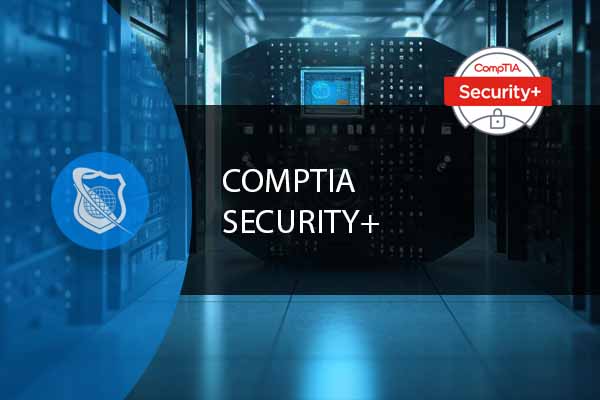Introduction to Security Governance
Security governance is a critical component of an organization’s overall governance framework, focusing on the strategies, policies, and procedures that protect an organization’s information and assets. In the digital age, where cyber threats are constantly evolving, effective security governance is more important than ever. It is not just about implementing technical measures, but also about aligning these measures with business goals, managing risks, ensuring compliance, and fostering a culture of security awareness. This comprehensive approach helps organizations protect their critical assets, maintain customer trust, and comply with regulatory requirements.
Key aspects of security governance include:
- Alignment of security with business objectives.
- Risk management and mitigation.
- Resource allocation for optimal security.
- Policy development and compliance.
- Awareness and training for all employees.

Information Security Manager Career Path
Propel your career forward and be part of an essential member of any management team as an Information Security Manager. This advanced training series is designed specifically for those want to move up into a management position in the IT field.
Strategic Alignment
Strategic alignment in security governance involves integrating security strategies with business objectives to ensure that security investments are in line with the overall goals of the organization. This alignment requires close collaboration between security leaders and business executives. When security strategies support business objectives, they contribute to the organization’s success rather than being seen as a standalone or burdensome function.
Key points in strategic alignment include:
- Collaborative planning between security and business leaders.
- Security strategies that support and enable business goals.
- Regular review and adjustment of security plans to align with changing business objectives.
Risk Management
Effective risk management is at the heart of security governance. It involves identifying, assessing, and mitigating potential security risks to the organization. This process requires a thorough understanding of the organization’s risk appetite and the potential impact of different security threats. Ongoing monitoring and review are essential to adapt to the ever-changing risk landscape.
Elements of risk management include:
- Comprehensive risk assessment methodologies.
- Implementation of risk mitigation strategies.
- Continuous monitoring and review of risks.
Resource Management
Resource management in security governance refers to the allocation of financial, human, and technological resources to various security initiatives. Ensuring that the organization has skilled personnel and the right technology is crucial for effective security. Additionally, proper budgeting and financial management are essential to support these initiatives.
Aspects of resource management include:
- Allocation of resources based on security needs.
- Recruitment and training of skilled security personnel.
- Investment in appropriate security technologies.
Policy and Compliance
Developing and maintaining comprehensive security policies is a fundamental element of security governance. These policies should be in compliance with legal and regulatory requirements and should be regularly updated to reflect changes in the threat landscape and regulatory environment. Effective communication of these policies throughout the organization is also crucial.
Policy and compliance elements include:
- Development and regular updating of security policies.
- Ensuring compliance with legal and regulatory standards.
- Effective communication and enforcement of policies.
Awareness and Training
Promoting security awareness and conducting regular training programs are key to building a security-conscious culture within the organization. Employees should be aware of potential security threats and best practices for preventing breaches. Regular training ensures that employees are up-to-date with the latest security protocols.
Key aspects of awareness and training include:
- Regular and engaging security awareness programs.
- Training sessions on the latest security threats and best practices.
- Building a culture where security is everyone’s responsibility.
Incident Response and Recovery
Having a well-prepared incident response and recovery plan is vital for minimizing the impact of security incidents. This includes having procedures for effectively responding to incidents, as well as plans for recovering operations post-incident. Timely response and effective recovery can significantly reduce the damage and costs associated with security breaches.
Components of incident response and recovery include:
- Predefined procedures for responding to security incidents.
- Effective communication during and after an incident.
- Robust recovery plans to restore operations quickly.

Information Security Analyst Career Path
An Information Security Analyst plays a pivotal role in safeguarding an organization’s digital infrastructure and sensitive data. This job involves a blend of technical expertise, vigilance, and continuous learning to protect against ever-evolving cyber threats.
Performance Measurement
To ensure the effectiveness of security governance, organizations must establish metrics and Key Performance Indicators (KPIs) to evaluate their security posture. Regular auditing and assessment of security practices help in identifying areas for improvement. Feedback mechanisms are essential for continuous improvement in security governance.
Performance measurement involves:
- Defining clear metrics and KPIs for security.
- Regular auditing and assessment of security practices.
- Feedback loops for ongoing improvement.
Leadership and Culture
The role of top management in advocating for security is critical in establishing a strong security governance framework. Leaders should foster a culture where security is prioritized and integrated into all levels of the organization. Ethical considerations also play a significant role in responsible security governance.
Leadership and culture include:
- Strong advocacy for security by top management.
- Promotion of a security-driven culture throughout the organization.
- Ethical considerations in security decisions and actions.
Technology Integration
Integrating the latest security technologies is essential for effective security governance. Staying abreast of technological advancements helps in addressing new and evolving threats. Additionally, integrating security into the organization’s IT governance framework ensures a cohesive approach to managing technological risks.
Technology integration encompasses:
- Adoption of advanced security technologies.
- Alignment of IT and security strategies.
- Staying updated with technological developments in security.
Stakeholder Engagement
Engaging stakeholders is crucial in security governance. This includes communicating effectively with both internal and external stakeholders, building trust, and maintaining transparency in security matters. Stakeholder engagement helps in understanding their concerns and expectations, thereby strengthening the security governance framework.
Stakeholder engagement involves:
- Effective communication strategies with stakeholders.
- Building trust through transparency and accountability.
- Involving stakeholders in security discussions and decisions.
Secure Your Networks and Prevent Password Breaches
Our robust CompTIA Sec+ course is the perfect resouce to ensure your company’s most valuable assets are safe. Up your security skills with this comprehensive course at an exceptional price.
Key Term Knowledge Base: Key Terms Related to Security Governance
Understanding key terms in security governance is crucial for professionals in the field. It’s not just about the technology; it’s about aligning that technology with the right policies and people. In the ever-evolving landscape of cybersecurity, being conversant with these terms means being better equipped to protect organizational assets and navigate complex regulatory environments. Below is a curated list of key terms and their definitions to enhance your understanding of security governance.
| Term | Definition |
|---|---|
| Security Governance | The set of practices, policies, and procedures that an organization uses to protect its digital and physical assets, aligning with business goals and legal requirements. |
| Strategic Alignment | The process of integrating security strategies with business objectives, ensuring security investments align with organizational goals. |
| Risk Management | The identification, assessment, and mitigation of potential security risks to an organization. |
| Resource Management | Allocation of financial, human, and technological resources to various security initiatives. |
| Policy and Compliance | Developing and maintaining comprehensive security policies in compliance with legal and regulatory requirements. |
| Awareness and Training | Programs to promote security awareness and conduct regular training for employees on security threats and best practices. |
| Incident Response and Recovery | Procedures for effectively responding to security incidents and plans for recovering operations post-incident. |
| Performance Measurement | Establishing metrics and Key Performance Indicators (KPIs) to evaluate an organization’s security posture. |
| Leadership and Culture | The role of top management in advocating for security and fostering a culture where security is prioritized at all organizational levels. |
| Technology Integration | Integrating the latest security technologies into the organization’s IT governance framework. |
| Stakeholder Engagement | Involving and communicating effectively with both internal and external stakeholders in security matters. |
| IT Security | Protection of information technology systems and data from cyber threats. |
| Cybersecurity | The practice of protecting systems, networks, and programs from digital attacks. |
| Information Security Analyst | A professional responsible for safeguarding an organization’s digital infrastructure and sensitive data. |
| Information Security Manager | A managerial role focused on overseeing and coordinating an organization’s information security efforts. |
| Compliance | Adherence to laws, regulations, guidelines, and specifications relevant to the organization. |
| Risk Assessment | The process of identifying and analyzing potential risks that could negatively impact key business initiatives or projects. |
| Mitigation Strategies | Steps or actions taken to reduce the severity, seriousness, or painfulness of something, particularly risks. |
| Security Policies | Set of principles or rules designed to manage and secure an organization’s information technology and information assets. |
| Cyber Threats | Potential dangers to information systems, including damage, unauthorized access or data theft. |
| Incident Management | The management and response to an incident that could be, or could lead to, a disruption, loss, emergency, or crisis. |
| Key Performance Indicators (KPIs) | Quantifiable measurements that reflect the critical success factors of an organization. |
| Ethical Considerations | Moral principles that govern a person’s behavior or conducting of an activity, especially in security decisions and actions. |
| Security Investments | Financial or capital allocations made towards enhancing an organization’s security posture. |
| Regulatory Environment | The system of rules and regulations, and their enforcement, that guides the operations of an organization. |
These terms form the backbone of understanding and implementing effective security governance strategies in organizations. Being familiar with them can help in achieving a more secure and compliant operational environment.
Conclusion
Effective security governance is a multifaceted and evolving discipline. It requires a balance of strategic alignment, risk management, resource allocation, policy compliance, awareness, incident management, performance measurement, leadership, technology integration, and stakeholder engagement. As threats evolve and organizations grow, the approach to security governance must also adapt. By focusing on these key elements, organizations can build a robust security governance framework that not only protects their assets but also supports their overall business objectives.
Frequently Asked Questions Related to Security Governance
What is Security Governance and Why is it Important?
Security governance refers to the set of practices, policies, and procedures that an organization employs to protect its digital and physical assets. It’s crucial because it ensures that an organization’s security efforts align with its business goals, legal requirements, and risk tolerance, ultimately safeguarding its reputation, data, and operational continuity.
How Does Security Governance Differ from IT Security?
While IT security focuses specifically on protecting information technology systems and data from cyber threats, security governance encompasses a broader scope. It includes IT security but also integrates it into a wider framework that involves organizational policies, risk management strategies, compliance with laws and regulations, and fostering a culture of security awareness across all departments.
What are the Key Components of an Effective Security Governance Program?
An effective security governance program typically includes strategic alignment with business objectives, comprehensive risk management, resource allocation for security measures, development and enforcement of security policies, regular awareness and training for employees, effective incident response planning, continuous performance measurement, and strong leadership support.
How Can an Organization Develop a Strong Security Governance Framework?
Developing a strong security governance framework involves clearly defining security goals aligned with business objectives, conducting thorough risk assessments, allocating appropriate resources, establishing clear policies and procedures, promoting security awareness throughout the organization, and continuously monitoring and improving security practices.
What Role Do Employees Play in Security Governance?
Employees play a crucial role in security governance as they are often the first line of defense against security threats. Regular training and awareness programs are essential to keep them informed about potential risks and best practices for security. Encouraging a culture where every employee feels responsible for the organization’s security helps in early detection and prevention of security incidents.

























